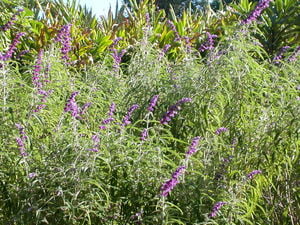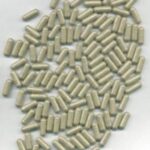In North America, ADHD is one of the most commonly diagnosed psychiatric disorders. Consequently, there are thousands of treatments and remedies ranging from psychiatric therapy to pharmaceuticals to herbalism and other natural remedies. Although many pharmaceutical drugs have been proven effective, they may cause severe, sometimes even fatal, side effects particularly when they are given to children. There are many herbs that can greatly relieve the symptoms of ADHD. Here are five of the most common:
Lavender
This one is pretty obvious. For decades, lavender has been used to help relieve tension and induce sleep. It is also one of the main herbs used in aromatherapy. Either fresh or dried lavender can be placed around the house and it is also recommended to use lavender oils in a diffuser. Even the use of lavender scented candles and bath product can provide relief. Also, although it is rather unusual, lavender can be made into a tea.
This herb should not cause any serious side effects. However, lavender is not recommended for those who have severe allergies and/or hay fever.
Valerian
If used properly, Valerian can have the same effect on the brain as benzodiazepines (anti-anxiety medications). It can also treat stomach ailments and help the person develop a more healthy sleep cycle. However, this herb should be used with caution. Some people may be allergic to it and may experiences unpleasant symptoms such as airway constriction, hives, and swelling of the face. Also, Valerian can sometimes have a reverse effect. Instead of calming the person down, he or she may become even more irritable and may experience intestinal and sleeping problems. If the person experiences severe headaches shortly after beginning use of this herb, it may be a sign that he or she is not reacting well to it.
However, if the person does not experience any adverse effects, Valerian will be a Godsend. Valerian can be made into a tea and can also be taken in capsule and tincture form.
Kava-Kava
Kava-kava is an ancient herb that was, and still is, particularly popular in the Pacific Islands. This herb is usually used to treat anxiety and, therefore, can help calm those with ADHD. Kava rarely has any adverse effects and is usually considered safe for children.
This herb can be taken in either tea or capsule form. It is also a very popular tea. In general, kava has a very bland taste. However, since only of roots of this herb can be consumed, it can sometimes have an earthy or sandy taste that, understandably, may be repulsive to children. Either make sure the herb is thoroughly rinsed before making it into a tea, or combine it with mint or something else that will mask the flavor.
Chamomile
Chamomile is another herb that is usually considered safe for children. This herb should not have any adverse effects unless the person is allergic to it. Because chamomile has a calming effect and can help induce sleep, it is one of the most popular “bedtime teas”. It can be taken in either tincture or capsule form. Because chamomile is so popular, it is very easy to find. Chamomile teabags can be purchased at nearly every supermarket.
Licorice
Licorice has great effects on the endocrine system and, therefore, can help control mood swings, the sweat glands, and, most importantly, the adrenal glands. This herb is recommended for patients who are extremely hyperactive.
In general, licorice does not cause side effects. However, if large quantities of licorice, more than 100 mg per day, are consumed over a long time period, the person may develop problems such as high blood pressure or muscle weakness. This risk should not scare anyone away from using this herb. If used properly, licorice is perfectly safe.
Licorice can be taken in capsule, tincture, or tea form. However, straight licorice has a taste so vile that it may be difficult for people with gag reflexes to consume. Thanks to Twizzlers, we have all been duped into thinking that licorice actually tastes good. The taste that most people identify as licorice is, in fact, Anise. In order to make licorice edible, it is recommended to mix it with Anise or mint.
Source: Castleman, Michael “The Healing Herbs”




